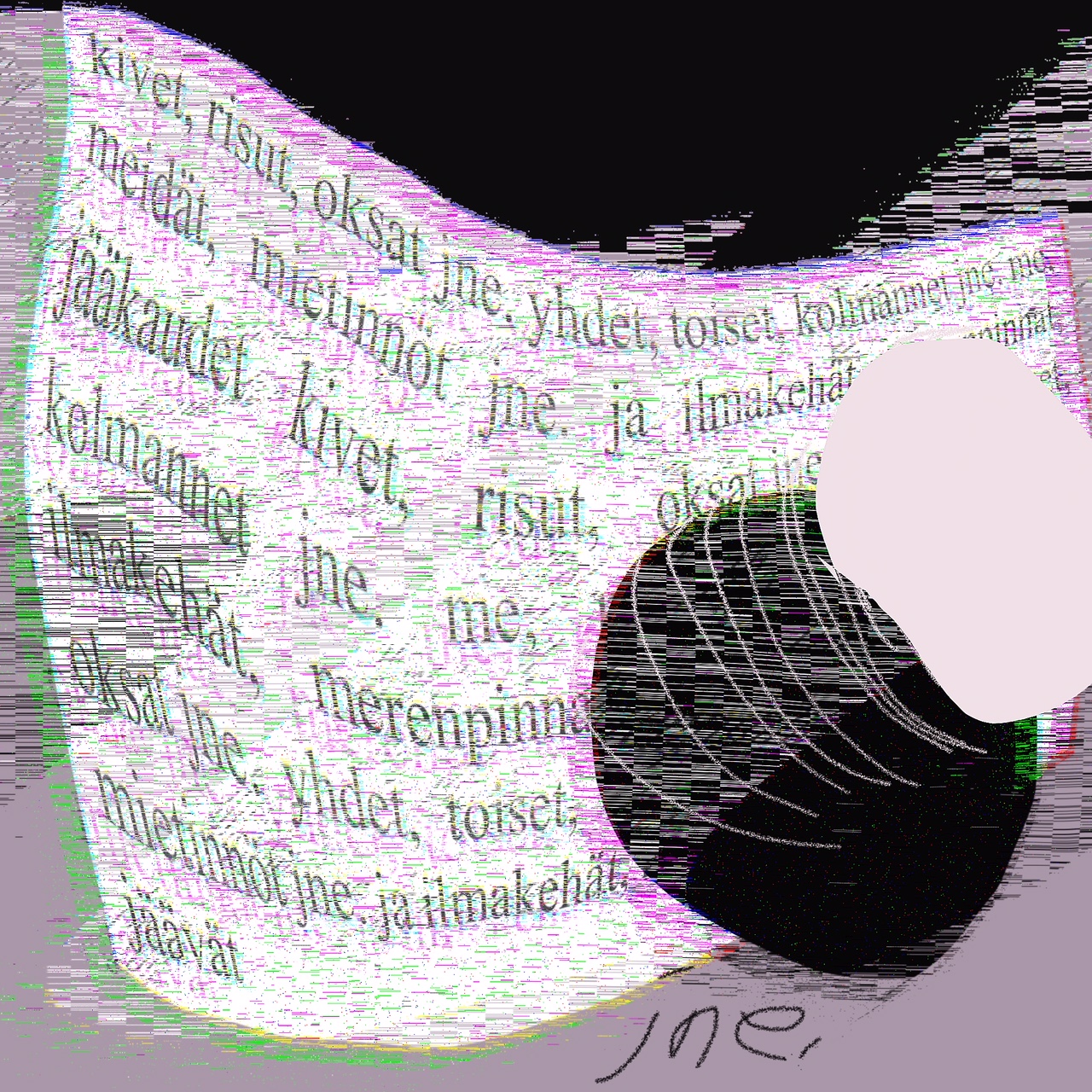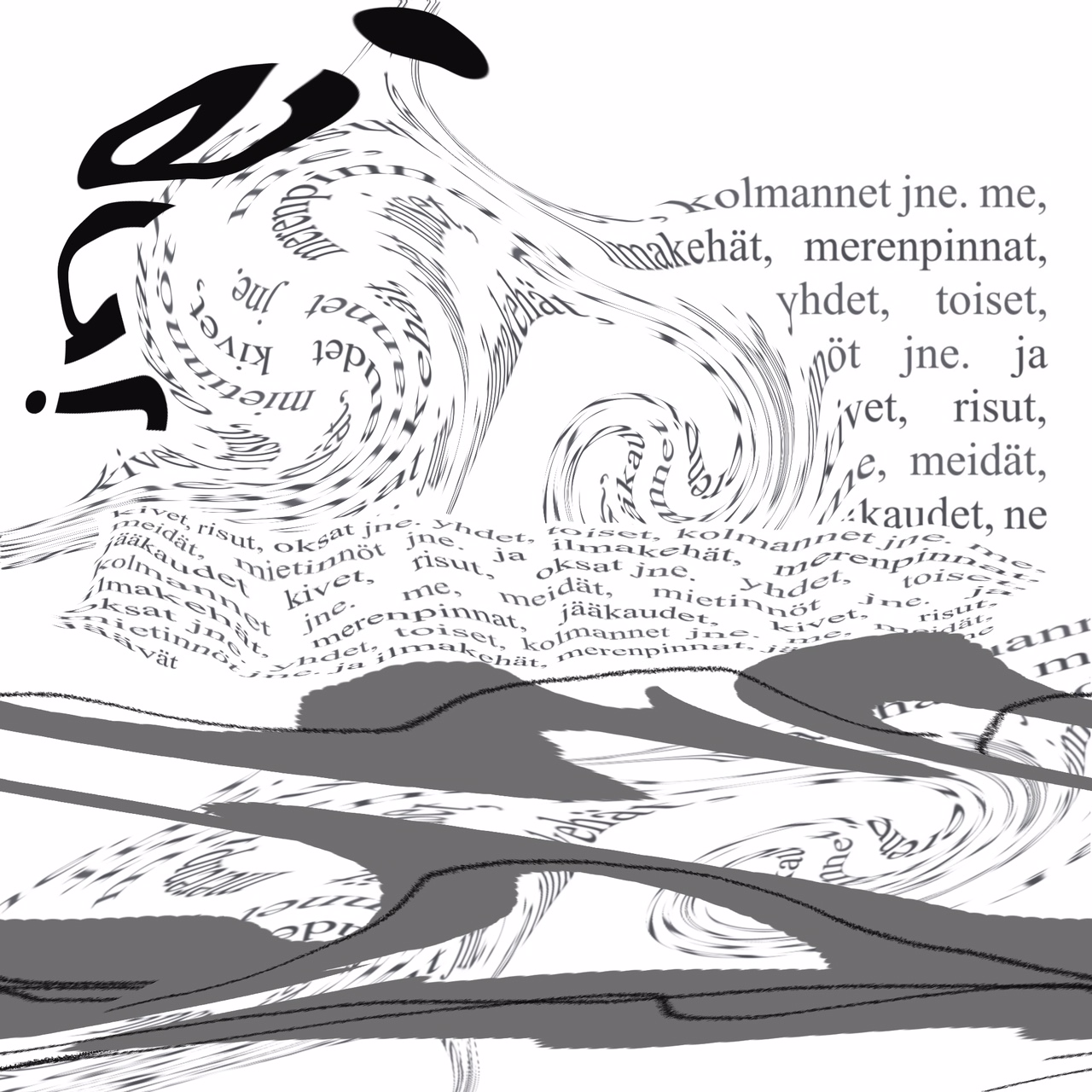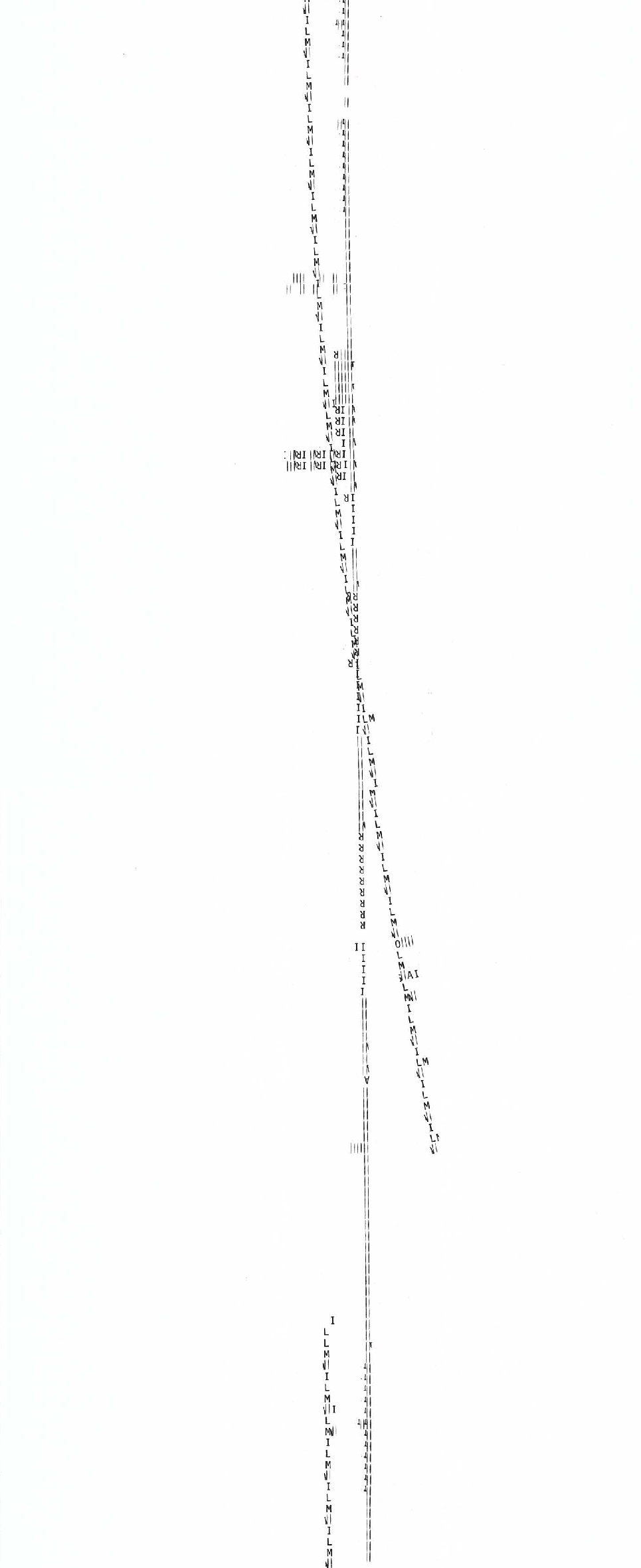
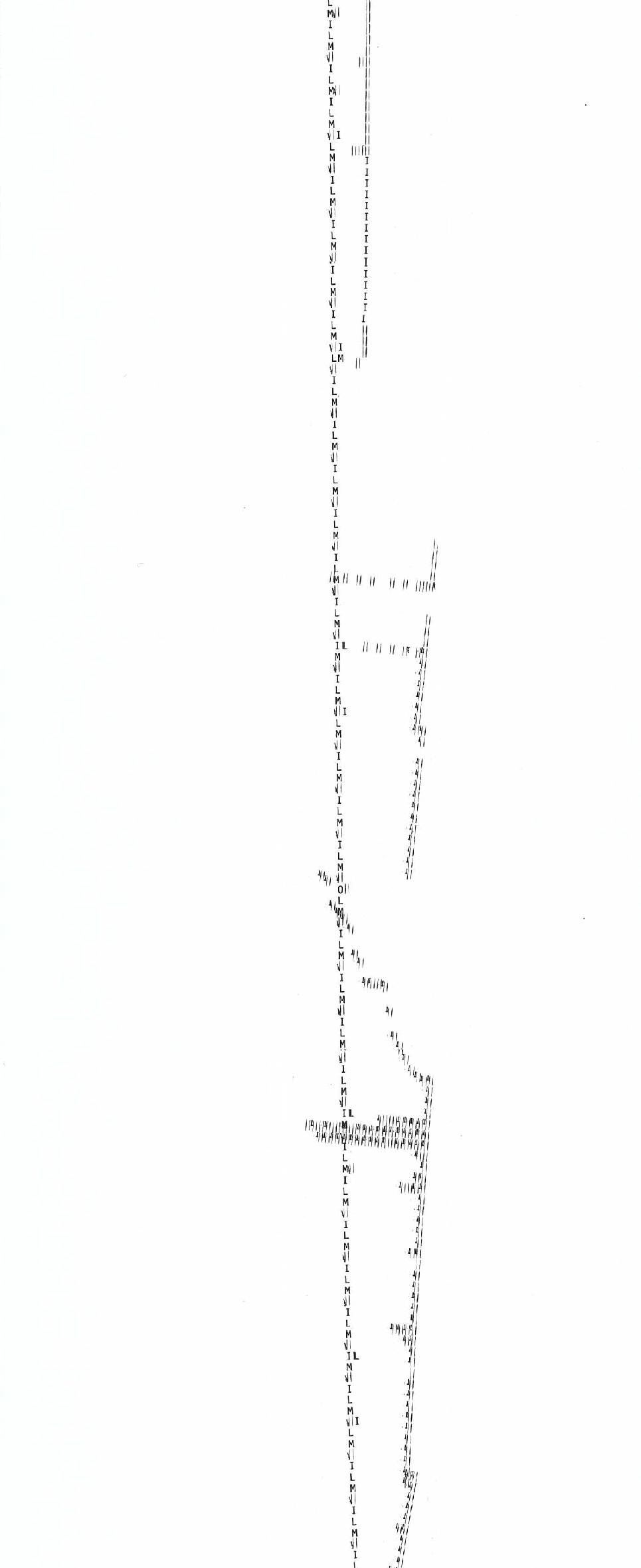

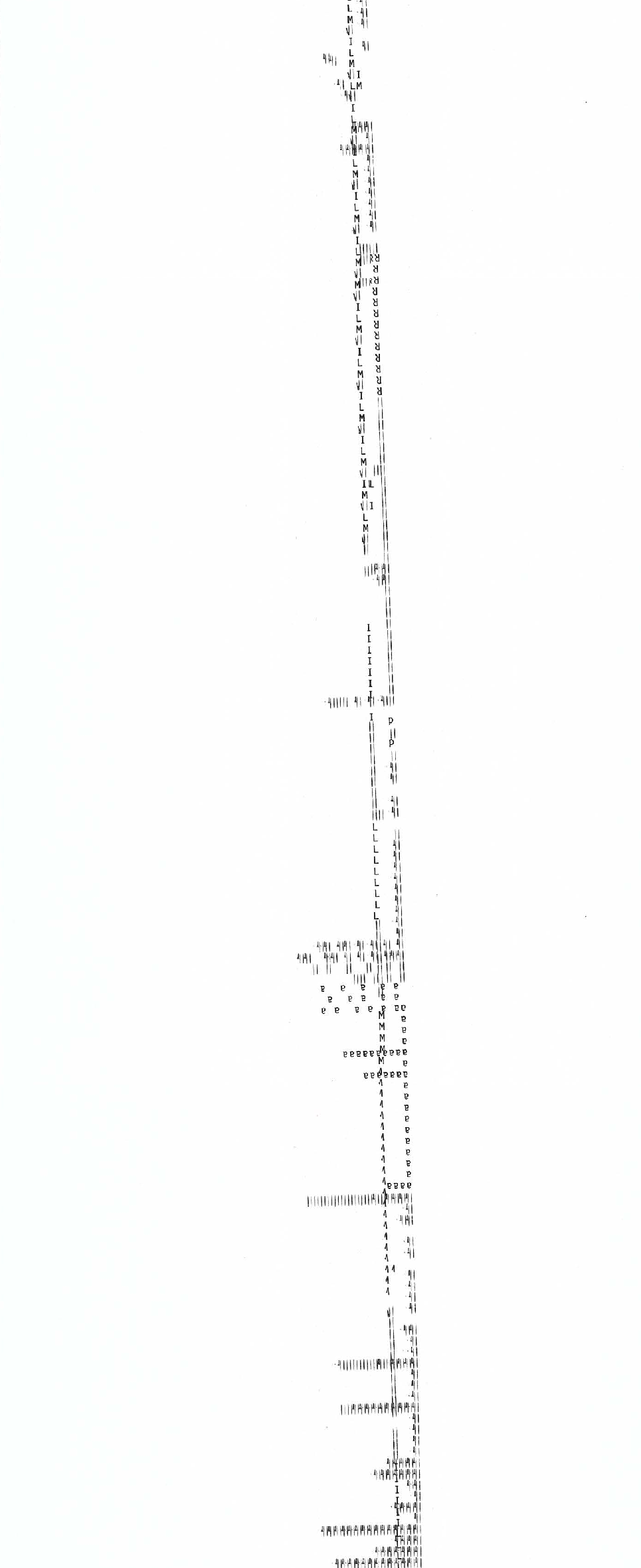

Digitaalista ja kokeilevaa runoutta
(Teos kokonaisuudessaan 5,7 cm x 20,38 m)
Tämä sähköisellä kirjoituskoneella kirjoitettu kaksikielinen runo kuvaa ’ilmaa’ sanan semanttisen merkityksen tuolla puolen, pyrkien painottamaan sanan monimerkityksistä ja typografista olemusta Letter Gothic -kirjaintyypin kautta. Ilma on oodi kirjoituskoneen äänelle, se on sota, ja rakkaustarina, taistelu arjen tylsistymistä vastaan. Runo on omistettu Guillaume Apollinairen typografiselle runolle ”Il Pleut”. Paperin mitat, 5,7 cm leveys ja 20,38 metrin kokonaispituus, asettavat fyysiset rajat tekstille ja määräävät sen muotoa. Tämä tekee runosta mittakaavaltaan poikkeuksellisen pitkän ja kapean, mikä vaikuttaa suoraan sen visuaaliseen ja sisällölliseen tulkintaan. Tämä katkelma on toinen yhdestätoista runon katkelmasta. Tämä katkelma on pala kokonaistaideteosta, joka tullaan julkaisemaan katkelmina eri julkaisuissa ja tiloissa ja medioissa.
Air, Ilma (Fragment 2).
2024
Typed on paper
(5.7 x 300 cm)
(The complete work: 5.7 cm x 20.38 m)
This bilingual poem typed on an electric typewriter, transcends the semantic meaning of the word ”air,” emphasizing its polysemic and typographic essence through the Letter Gothic typeface. Air is an ode to the sound of the typewriter—a war and a love story, a battle against the monotony of everyday life. The poem an homage to Guillaume Apollinaire’s typographic poem ”Il Pleut.” The dimensions of the paper—5.7 cm in width and 20.38 meters in total length—impose physical boundaries on the text and shape its form. These proportions render the poem exceptionally long and narrow, directly influencing its visual and material qualities. This fragment is the second of eleven sections of the poem. It is part of a Gesamtkunstwerk intended to be published as fragments across various publications, spaces, and media.
Niina Turtola on tohtoritutkija, visuaalisen viestinnän muotoilija, tekstitaiteilija ja graafisen muotoilun lehtori.





Tuomenkehrääjäkoin lähtökohtana ovat olleet toukat, jotka valtaavat seitillään isäntäpuun omiin tarkoituksiinsa. Teos kertoo siitä, miten lähellä toisiaan syntymä ja kuolema ovat ja miten hävityksen keskeltäkin voi vielä kehittyä uutta elämää, vaikka ihminen onkin tuholaisista pahin.
The starting point of Tuomenkehrääjäkoi (In English The Bird-Cherry Ermine) has been the caterpillars that take over the trees with their webs. The theme of the video poem is the narrow gap between birth and death. In the middle of destruction, new life can develop, even when human being is the worst of pests.
Digitaalisten kuvarunojeni taustalla on aina teksti, tässä tapauksessa sen toisteisuus. Kivet, risut ja oksat ovat poluillamme tavallisia vastaantulijoita, mutta myös erilaiset mietinnöt liukuvat eteemme kuin nousevat merenpinnat ja historialliset jääkaudet. Uutisvirrat toistuvat ja tulevaisuus kertaa ihmiskunnan historiaa. Kuka ottaa mukaansa ihmisen, meidät?
Behind my digital visual poems is always a text, in this case a repetitive one. Rocks and sticks on our paths are common bypassers, but different thoughts come to us more like waves or historical ice ages. News streams repeat themselves and the future repeats the history of human kind. Who will take with them the human, us?
